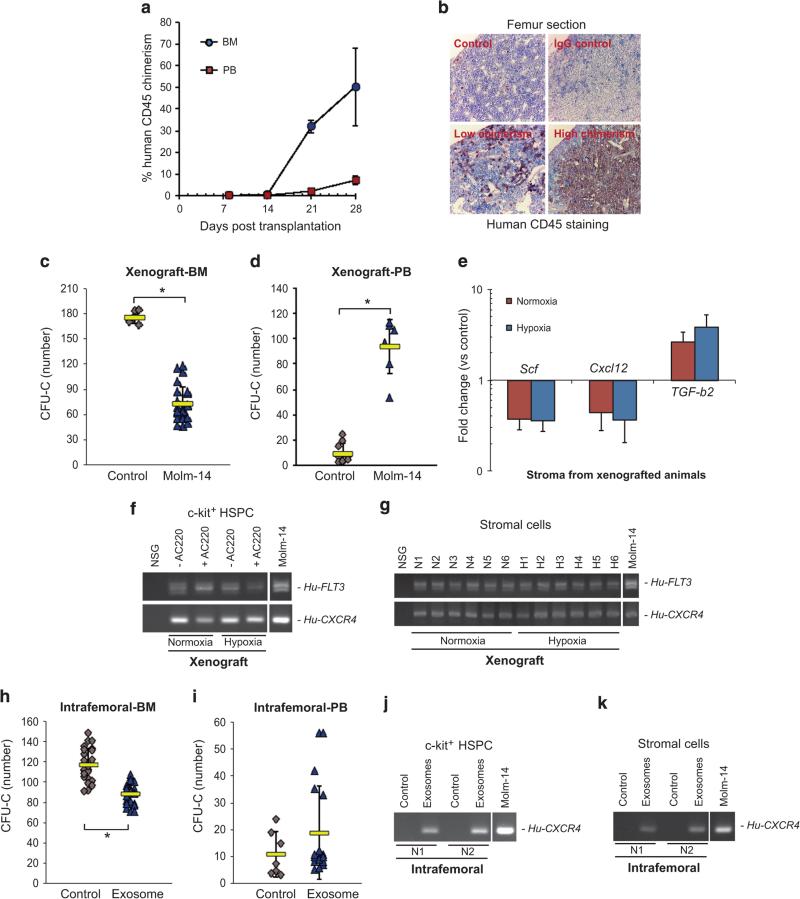Figure 1.
AML xenografts and exosomes modulate BM compartmental signaling. (a) BM and PB chimerism were measured by flow cytometry for human CD45+ cells. Data from 6 independent experiments with total 67 animals engrafted with either hypoxia- or normoxia-conditioned Molm-14. The results are presented as mean ± s.e.m. (b) Femur sections of engrafted mice were examined by IHC. Low chimerism: < 5% huCD45+; high chimerism: > 50% huCD45+ in the BM. (C-G) NSG mice were engrafted with Molm-14 (Xenograft) (n = 10) or (H-K) exposed to Molm-14-derived exosomes through IF injection (Intrafemoral) (n = 8). (c and d) CFU-C assays were performed on c-Kit+ progenitor cells and PBMC isolated from xenografted animals. (e) The stromal regulatory gene profile in xenografted recipient BM stroma was evaluated by qRT-PCR. (f and g) Transfers of human FLT3 and CXCR4 in AC220-treated c-Kit+ cells and recipient BM stroma were determined by RT-PCR. N1 to N6 and H1 to H6 represent the individual animal. (H-I) CFU-C assays were performed on c-Kit+ progenitor cells and PBMC from IF-injected animals. (j and k) The presence of human transcripts (FLT3 and CXCR4) in c-Kit+ progenitor and BM stromal cells from IF-injected animals was examined by RT-PCR. Vehicle medium was used as the control. Data are representative of 6 independent xenograft experiments and four independent IF experiments. The results are presented as mean ± s.d. *P < 0.01.

